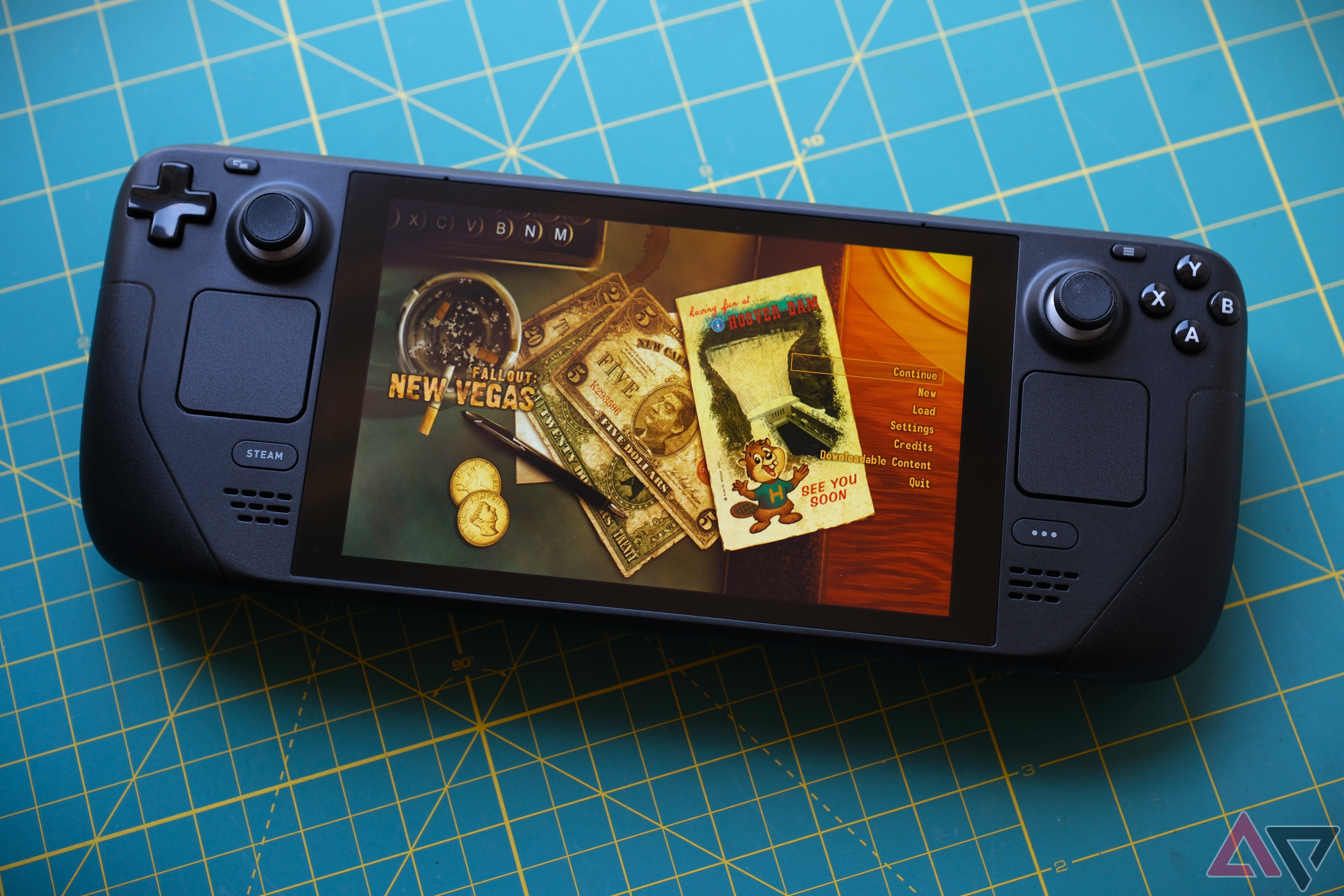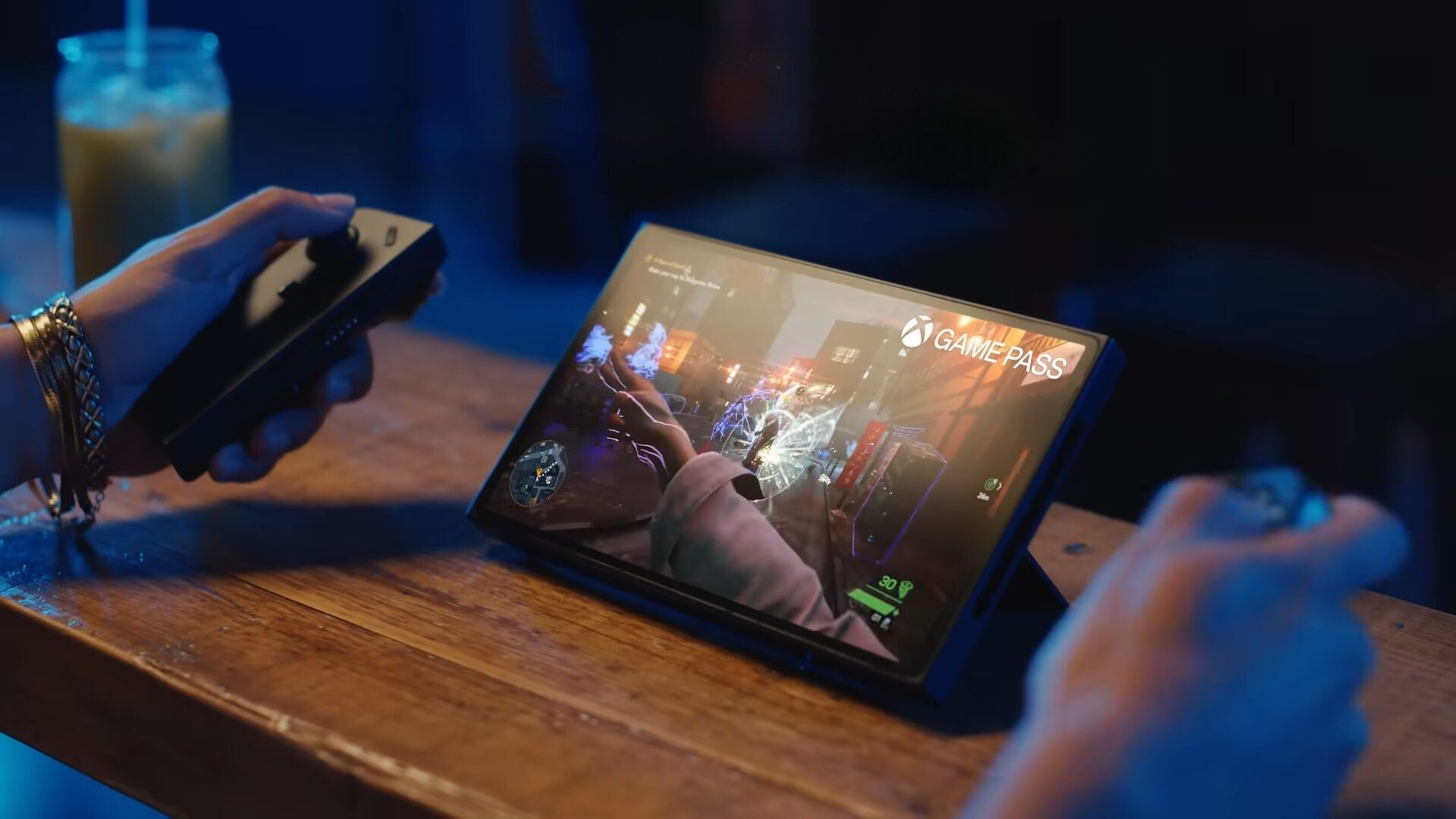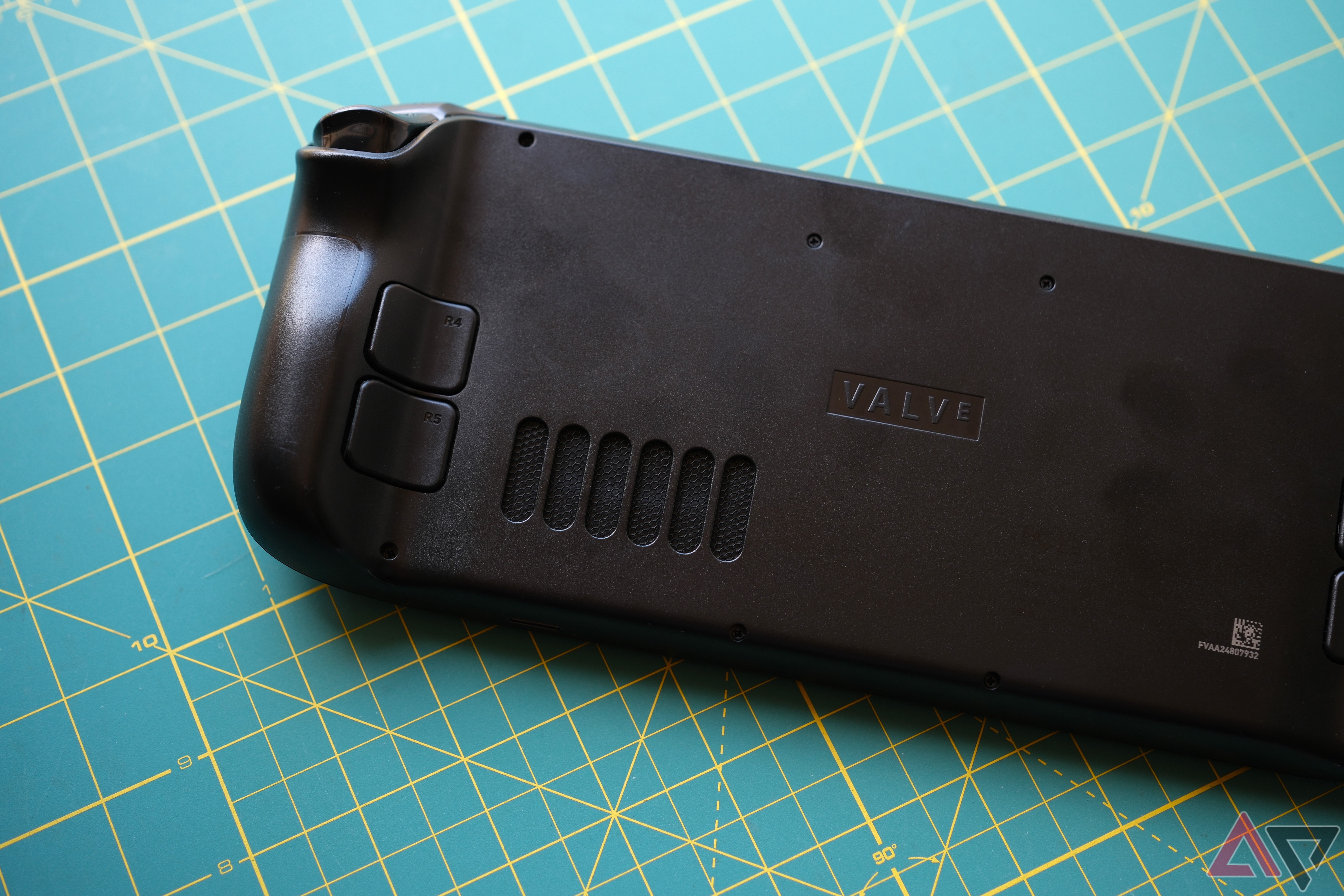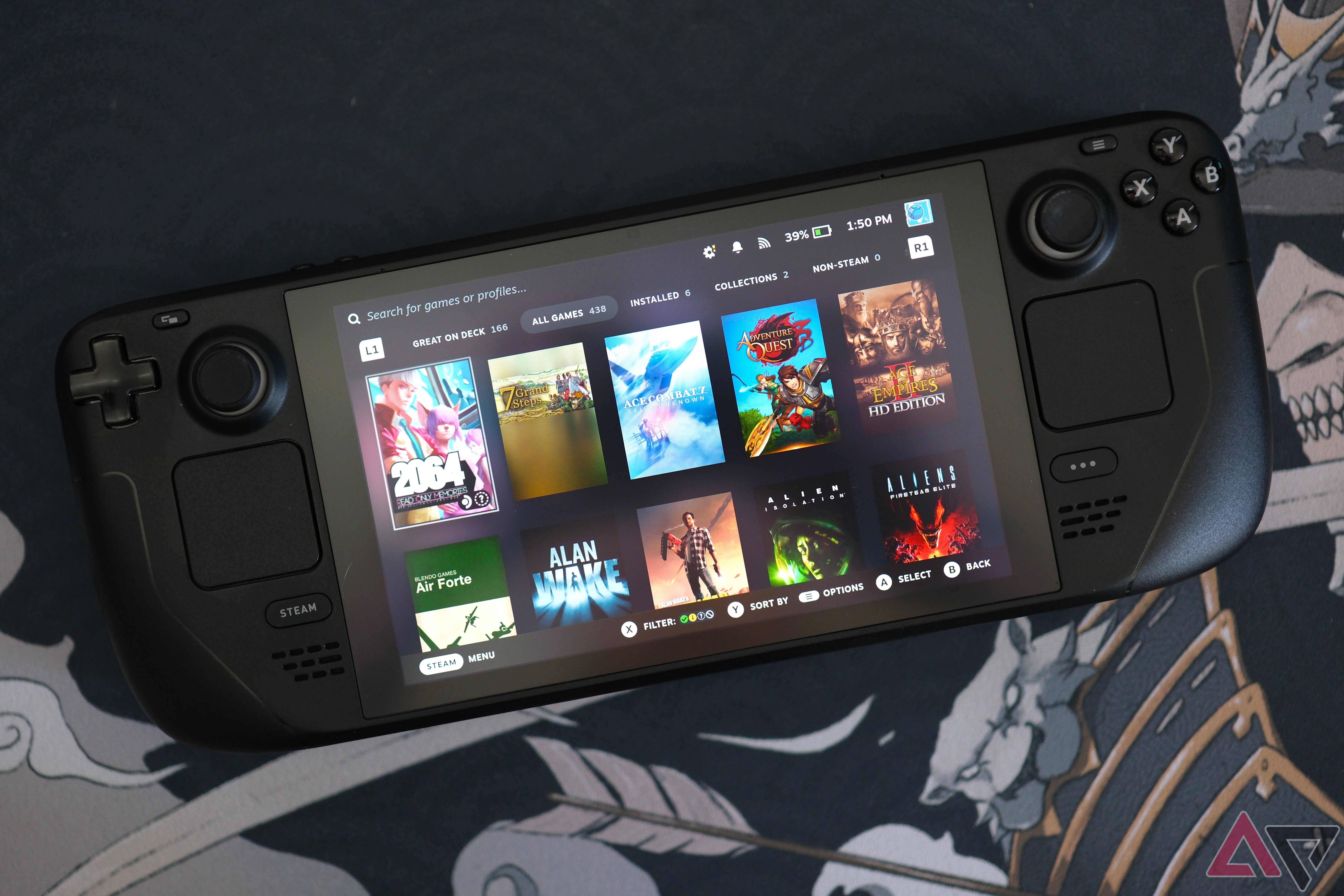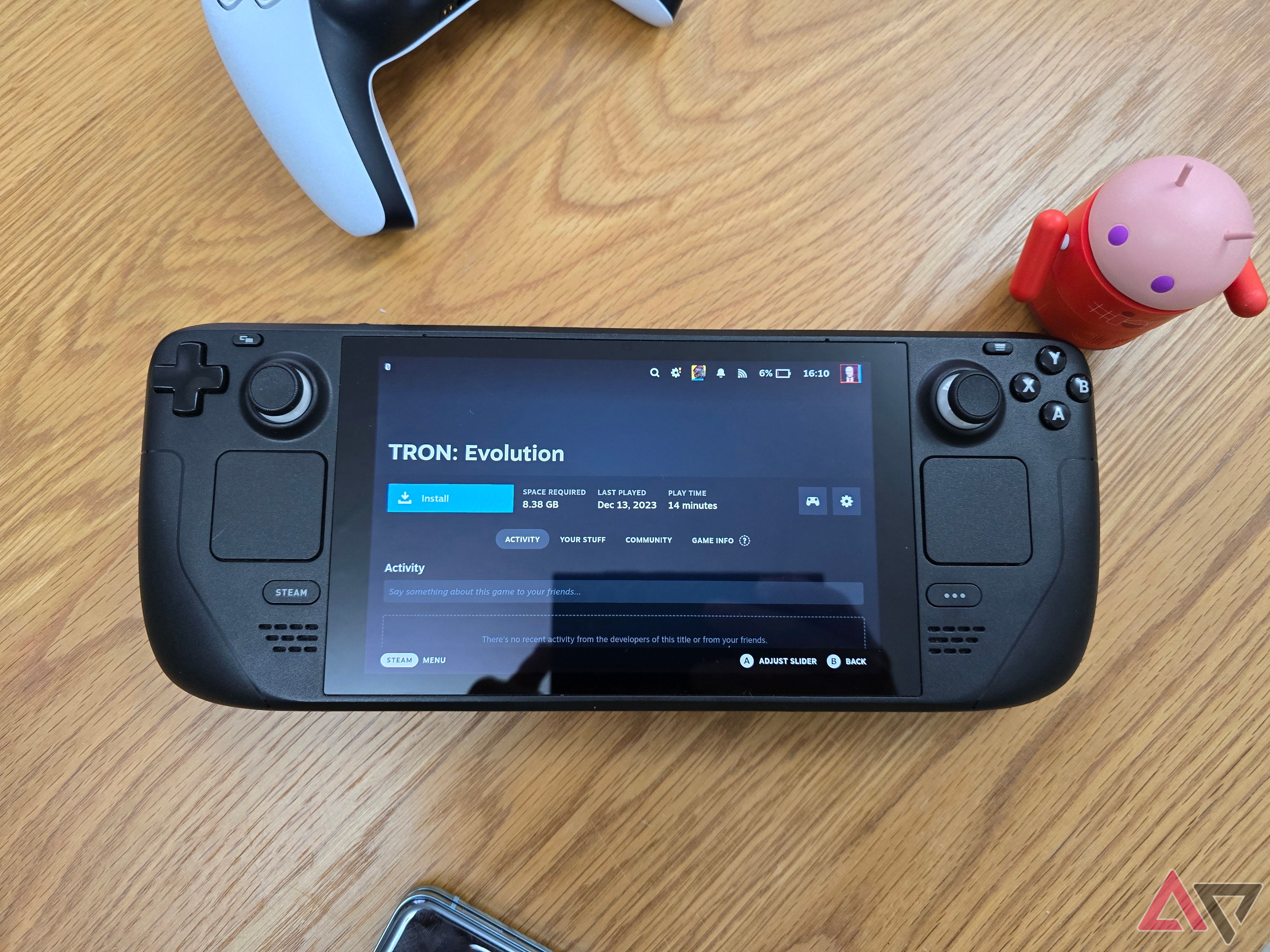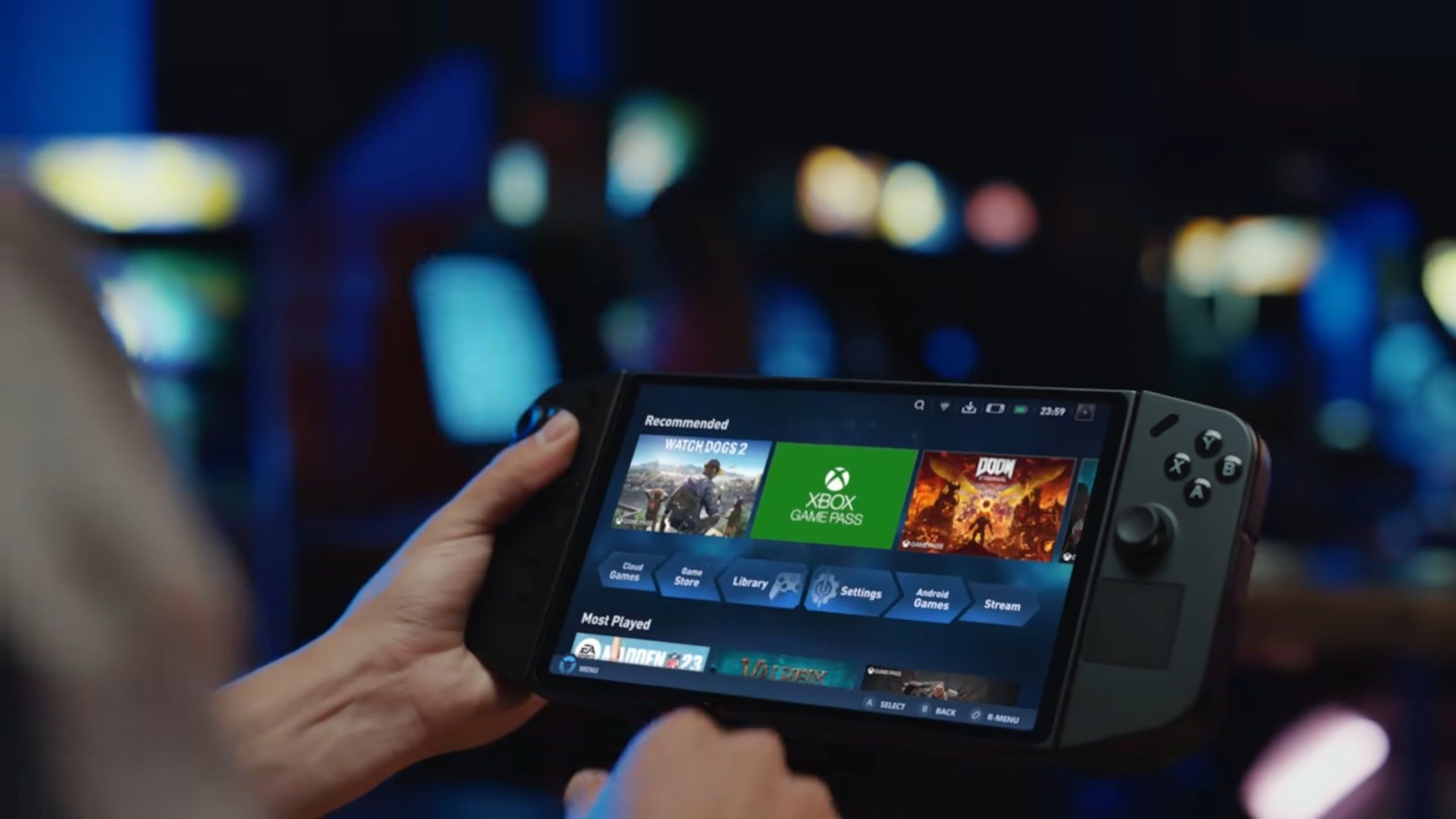-
Steam Deck
Great user experienceWhile its hardware doesn’t match its competitors, the Steam Deck is a balanced console that offers a fantastic on-the-go gaming experience. Its battery life is unimpressive but will last long enough in most situations.
Pros- SteamOS is great to use
- Comfortable to use for long periods
- Relatively good battery life
Cons- Linux-based OS limits supported games
- Steam Verified program isn’t reliable
-
Lenovo Legion Go
Versatile and powerfulThe Lenovo Legion Go’s detachable controllers aren’t just a gimmick; they add impressive versatility to the handheld console. However, its price is hard to swallow because it doesn’t offer notable performance improvements over the Steam Deck.
Pros- Fantastic screen
- Detachable controllers
- Perfect for couch gaming sessions with friends
Cons- Poor battery life
- Frustrating software
- Not great value for money
While the original Steam Deck now sits firmly in the shadow of its OLED-equipped successor, it’s still an impressive device that offers performance similar to most competitors at a great price. In 2024, it is one of the best handheld consoles you can buy.
Before PC handheld consoles hit the mainstream, the Nintendo Switch’s detachable controllers made headlines. While this feature is absent from most of its competitors, Lenovo’s Legion Go console aimed to emulate the Switch’s style while adding a few tricks of its own.
The Steam Deck and Lenovo Legion Go offer very different ways to play PC games on the go. So, which one is best for you?
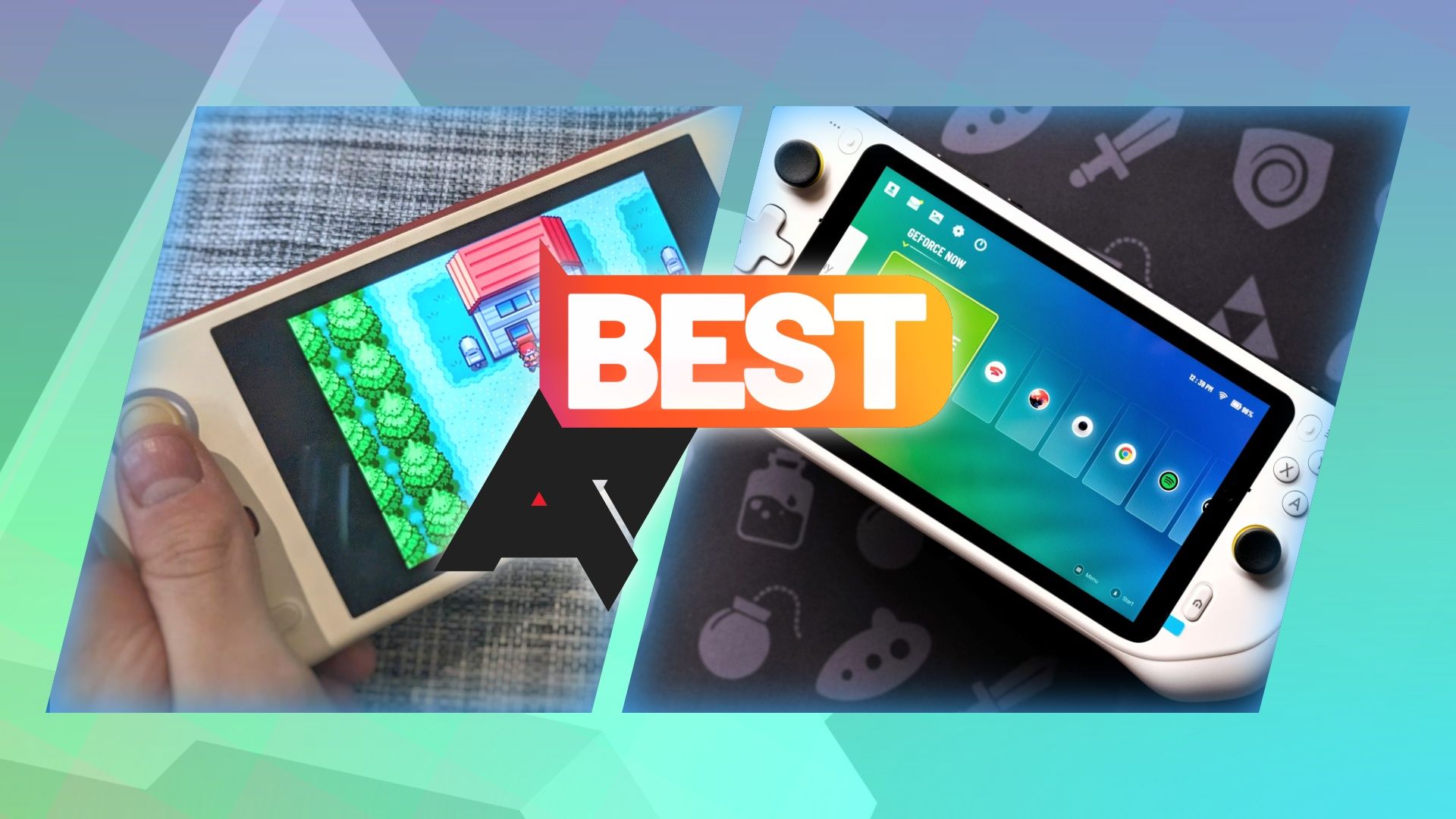
Best Android handheld consoles in 2024
From retro handhelds to streaming powerhouses, there’s an Android handheld for every situation
Price, availability, and specs
The Steam Deck ships free to Europe, Japan, Australia, New Zealand, the UK, the US, and Canada, but can only be purchased through Valve’s online storefront. It’s available as a single $399 256GB model, but Valve occasionally sells refurbished models with 64, 256, or 512GB of storage.
The Lenovo Legion Go is available worldwide through Lenovo’s online store and retailers including Best Buy. Two versions are available: 512GB for $700 and 1TB for $750, but the 1TB model is not available in Europe.
-
Steam Deck
- Dimensions
- 298 x 117 x 49mm
- Brand
- Valve
- Weight
- 669g
- Chipset
- Zen 2 AMD APU 2.4-3.5GHz
- RAM
- 16GB
- Storage
- 256GB
- Wireless Connectivity
- Bluetooth 5.0, Wi-Fi 5
- Headset Compatibility
- 3.5mm jack, Bluetooth
- Display
- 7-inch 1280 x 800 LCD, 60Hz
- Graphics
- AMD RDNA 2, 1.6GHz
- Ports
- Headphone jack, USB-C, MicroSD
- Battery
- 5,200mAh
Lenovo Legion Go
- Dimensions
- 298.9mm x 131mm x 40.7mm
- Brand
- Lenovo
- Weight
- 854g
- Chipset
- AMD Ryzen Z1
- RAM
- 16GB
- Storage
- 512GB
- Wireless Connectivity
- Bluetooth 5.1, Wi-Fi 6E
- Headset Compatibility
- 3.5mm cable, Bluetooth
- Display
- 8.8 inch, 2560×1600, IPS, 144Hz
- Graphics
- AMD RDNA 3
- Ports
- 3.5mm jack, 2x USB4 Type C, MicroSD
- Battery
- 49.2Whr

Steam Deck review: 18 months in, this is the handheld for me
The Steam Deck made handheld gaming PCs affordable
Design and controls
Simplicity vs versatility
The Steam Deck is a bulky beast, but its rounded grip makes it comfortable to hold. It’s heavy, at 669g (about the weight of two Nintendo Switches), but compared to the 854g Lenovo Legion Go, it is a relatively svelte console. This 200g difference is huge, especially when you consider the Legion Go’s angular frame.
The Lenovo Legion Go will fit into the largest hands, but the angular style, while stylish, isn’t designed with a comfort-first approach. The Steam Deck is the best choice for long gaming sessions on the go, but the Legion Go has a few tricks to compensate for its weight and design.
The Legion Go has a kickstand to complement the detachable controllers and ships with a dock for one controller, turning it into a makeshift mouse for FPS gaming. While this accessory doesn’t quite make up for the fact that your wrists will ache after long periods, it’s a nifty feature you can’t replicate on the Steam Deck without a case with a kickstand and an external controller.
The consoles’ button layouts differ substantially. The Steam Deck pushes the joysticks, d-pad, and XYBA buttons to the top of the screen to make room for the trackpads and enlarged grips, while the Legion Go’s controller layout is designed to be equally useable when the controller is detached. The Steam Deck’s layout wins in handheld mode, as it’s much easier to handle when holding the entire console. However, the Legion Go’s versatility means you can use it on the go, resting on a table, or split with a friend for co-op gaming.
Overall, deciding which console is best for you regarding design comes down to your use case. While the Steam Deck is undoubtedly a better experience in hand, the Legion Go’s detachable controllers mean you can use the console in more ways.
Display
A clear winner, but with a compromise
The Steam Deck and Lenovo Legion Go have LCD screens, but the similarities end here. The Steam Deck’s 1280 x 800 screen, which caps at 60Hz, pales in comparison to the Legion Go’s 2560 x 1600 resolution, which has a 144Hz refresh rate.
However, while the Legion Go’s display is better on paper, it doesn’t have the hardware to make the most of it. Most AAA games should look great on the Go’s screen but struggle to run at consistent frame rates without lowering the resolution or graphics settings. This defeats the point of such a spectacular screen.
That being said, the Legion Go’s bigger display is helpful when using it with the controllers detached. If you’re willing to accept the performance compromises, you’ll struggle to be disappointed by its display.
Software
Versatility isn’t everything
SteamOS on the Steam Deck is a fantastic way to manage your games. The Linux-based OS also means that not every game available on Steam will work, although the Deck Verified program is upfront about this information. The catch is that this information isn’t always reliable; some games confirmed by Valve to run on Steam Deck don’t, while many unsupported games work fine. Another catch is that apps like the Epic Games Store and Xbox Game Pass don’t run natively on the console; you’ll need to install Windows alongside SteamOS to play games from these apps.
Despite these drawbacks, the Steam Deck is a far better software experience than the Lenovo Legion Go. Windows on the Legion Go is clunky and awkward to use; simple tasks like changing the resolution aren’t straightforward. While other consoles like the Asus ROG Ally compensate for these drawbacks with a user-friendly software layer, Legion Space is nearly as frustrating as Windows itself.
While Legion Go supports more games, it’s much more frustrating to use than the Steam Deck. Limitations aside, the Steam Deck has better software for managing and launching games.
Performance
A closer match than you might expect
Like the display, while the Lenovo Legion Go’s performance is better on paper, it comes with compromises that make these improvements somewhat irrelevant. Both consoles have AMD chipsets, but the Legion Go offers a newer, faster model. It’s a similar story with the GPU on the Legion Go, which is a direct upgrade over the Steam Deck’s.
What this means for your games is that the Legion Go can technically reach a higher FPS than the Steam Deck running the same games. However, it’s not optimized well, so less demanding games may actually run better on the Steam Deck.
The big difference is that the Steam Deck’s hardware simply can’t run some games. This means that the Legion Go lets you play games unavailable on the Steam Deck without extensive tinkering with the console’s software. However, don’t expect significant performance boosts, especially if you’re trying to use every part of the Legion Go’s display.
Battery life
An unimpressive showing from both sides
The Steam Deck’s battery is rated to last one hour if a game uses 40W of power. The Legion Go has 49 watt-hours, which is more. However, that massive high-resolution display uses a lot of juice, so the Go’s won’t last much longer than the Steam Deck.
However, if you turn the Legion Go’s resolution and refresh rate cap down, you’ll notice a significant boost in battery life that easily beats the Steam Deck. But it’s still not great, so you’ll want to keep a power bank on hand if you’re traveling.
Which is right for you?
Don’t spend money on features you don’t need
On paper, the Lenovo Legion Go’s detachable controllers, impressive display, bigger battery, and more powerful hardware make it seem like an easy win over the Steam Deck, but as we’ve seen, these numbers don’t translate well into reality. Since the Legion Go is $230 more, it’s clear which console offers better value for money.
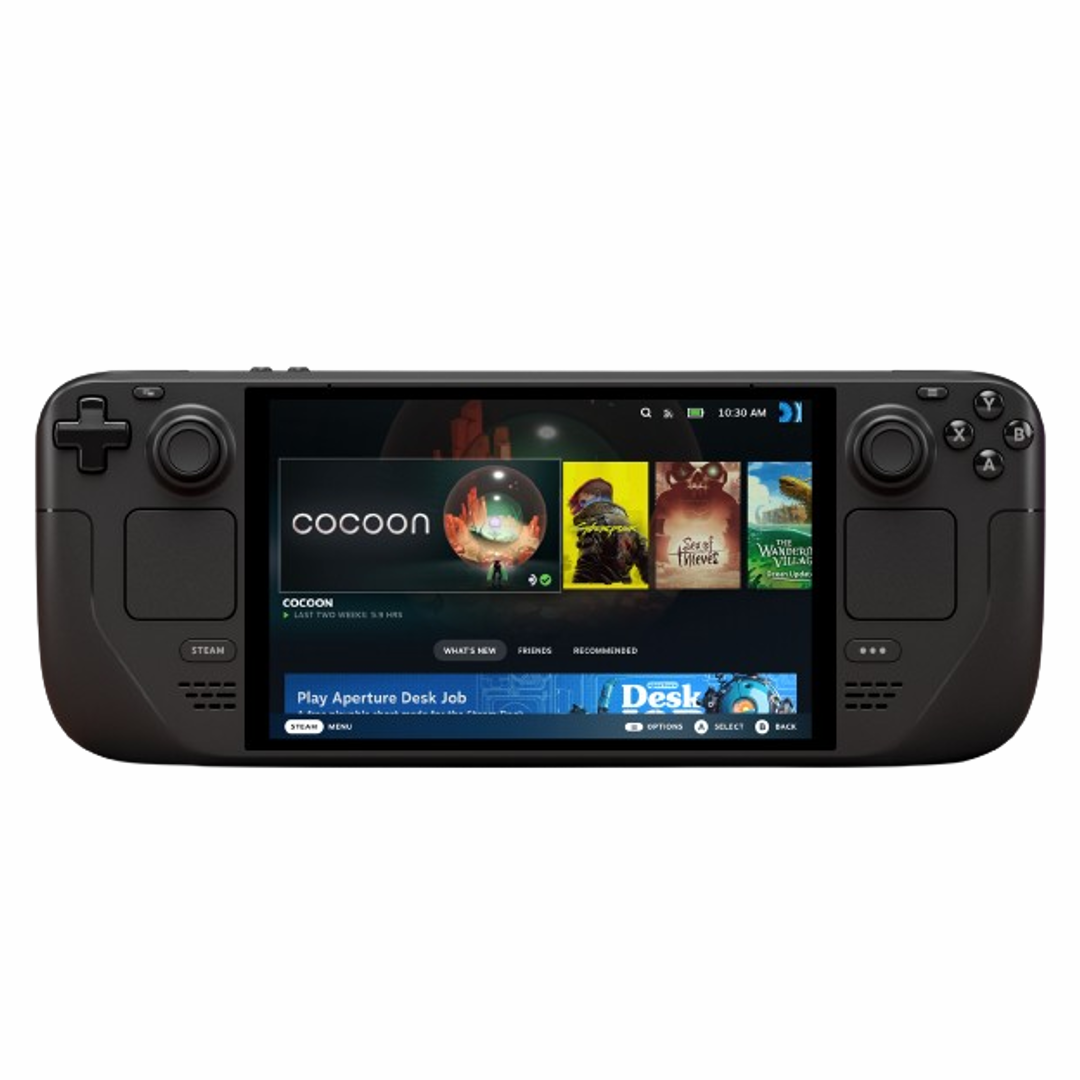
Steam Deck
A great all-rounder at a reasonable price
Despite its compromises, the Steam Deck is a great solution for playing Steam Games on the go. Just confirm that your favorite games are compatible before you buy.
The Legion Go is a great buy if you regularly play co-op games with a friend or want a console for short sessions, the Legion Go is a great buy. However, other Windows-based options like the Asus ROG Ally might be worth some consideration. The ROG Ally offers an all-around better experience for a lower price.

Lenovo Legion Go
A versatile but flawed console
The Lenovo Legion Go’s impressive specs don’t translate well to reality, but it’s undeniably a versatile and powerful console capable of handling most PC games.




